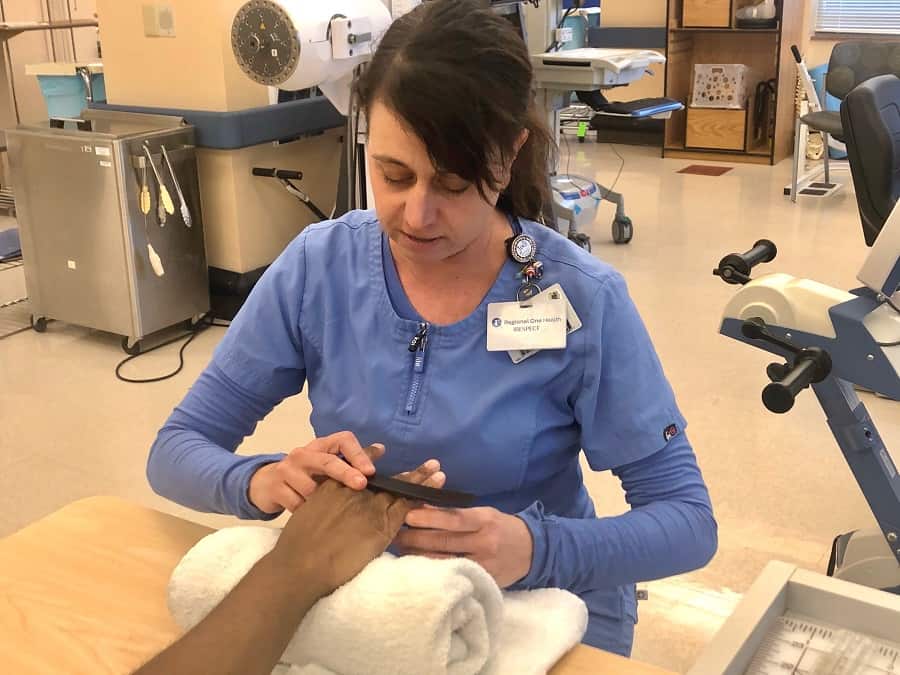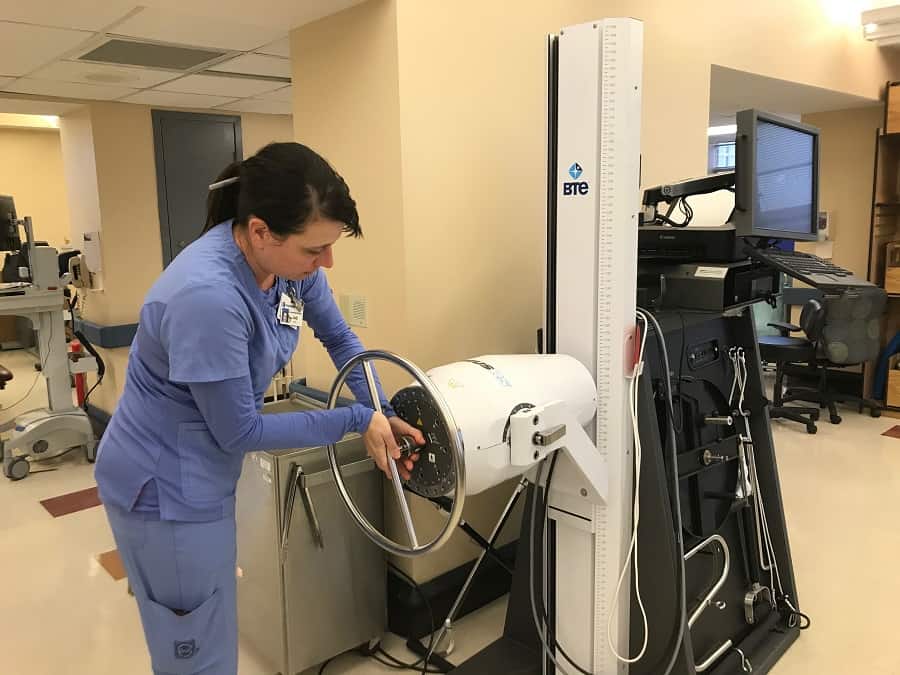We use our hands and arms for so much of what we do, so when an injury gets in the way, it can have a major impact on quality of life.
The hands and arms are also very complex, so it takes a clinician with a special level of expertise to treat these injuries successfully.
Jodi Barron is a certified hand therapist at Regional One Health. She can help patients get back to normal with manual therapy, splints, specialized exercise plans and more.
Our arms and hands are essential to so many of the things we do: get dressed, drive a car, tasks at work or school, cook dinner for our family. When an illness or injury makes these activities painful or impossible, a certified hand therapist can make a huge difference.
Jodi Barron, OTR/L, CHT offers hand therapy at Regional One Health. She works with patients who have experienced hand injuries due to both trauma and repetitive motion.
“The hands are very complicated. You want someone with expertise when dealing with a hand injury; someone that understands the complex system of the boney structures, muscles and nerves that allow our hands to work. You don’t want anything to be missed, because you use your hands for everything,” Barron said. “Patients typically have good outcomes. They don’t always go back to 100 percent, but they’re able to do what they want to do.”
“Our goal is always to maximize function and to get a person back to being able to take care of their needs and do their jobs.”
Despite the importance of hand therapy, there are only about a dozen certified providers in the Memphis area. Providers must have five years of experience as a physical or occupational therapist, complete 5,000 hours of practice in hand therapy, and pass a rigorous test.
Barron, who has been an occupational therapist for 20 years, became a certified hand therapist three years ago.

Jodi Barron, a certified hand therapist at Regional One Health, develops customized treatment plans for her patients. “Our goal is always to maximize function and get a person back to being able to take care of their needs and do their jobs,” she says.
She said many of her patients have suffered significant trauma, such as fractures to bones in the hand or forearm and injuries to tendons and nerves. Others are experiencing repetitive motion injuries, like carpal tunnel syndrome or tendonitis. Patients with illnesses like stroke or arthritis can also benefit from hand therapy.
“We treat the whole upper extremity, because what’s happening with the hand also connects up the arm to the shoulder, elbow, neck and core,” Barron explained.
Treatment starts with a thorough evaluation, which takes about an hour. It includes:
- A physical exam and verbal interview
- Reviewing imaging and notes provided by the patient’s physician
- Range of motion and strength tests
- Sensation tests
- Function and fine motor tests
From there, Barron develops an individualized treatment plan. “It’s very patient-focused,” she said. “They are part of making their plan of care and setting goals.”
Treatment often includes manual therapy such as stretching and loosening soft tissue to relieve stiffness, pain and swelling. Barron provides custom splinting for support, motion facilitation and other needs, and also uses therapies like cupping and taping.
Customized exercise plans are the other major component of therapy.
During therapy sessions, patients may use bands for stretching or weights for strength.
Barron also uses specialized equipment that simulates tasks like driving or lifting. The equipment can be geared to specific tasks – for example, if a patient paints houses for a living, she can customize the equipment to practice climbing a ladder and making brush strokes.
Barron sends each patient home with exercises they can do on their own. She said those who are diligent about performing them regularly often make strides more quickly.

Barron uses specialized exercise equipment to help patients regain skills like driving and lifting. She has even customized it for specific work-related needs, such as climbing a ladder.
All of the efforts share a common goal: “We focus on functional tasks like self-care and the ability to manage things at home and work, as well as leisure activities,” Barron said.
Many patients are able to recover fully and resume normal activities.
But even when that isn’t possible due to the severity of the injury, Barron can help patients find a new normal. “With some patients, I do have to tell them at some point that it’s not going to go back to normal,” she said. “From there, we focus on function and doing things a little differently, but still allowing them to do what they want to do.”
It’s important for patients struggling with hand injuries to get expert help. Hand therapists have additional expertise in treating this intricate part of the body, and participate in continuing education to stay up-to-date on the latest technology and treatment options.
Barron sees patients based on referrals from physicians. She said any patient who thinks they can benefit from hand therapy should talk with their doctor about a referral.